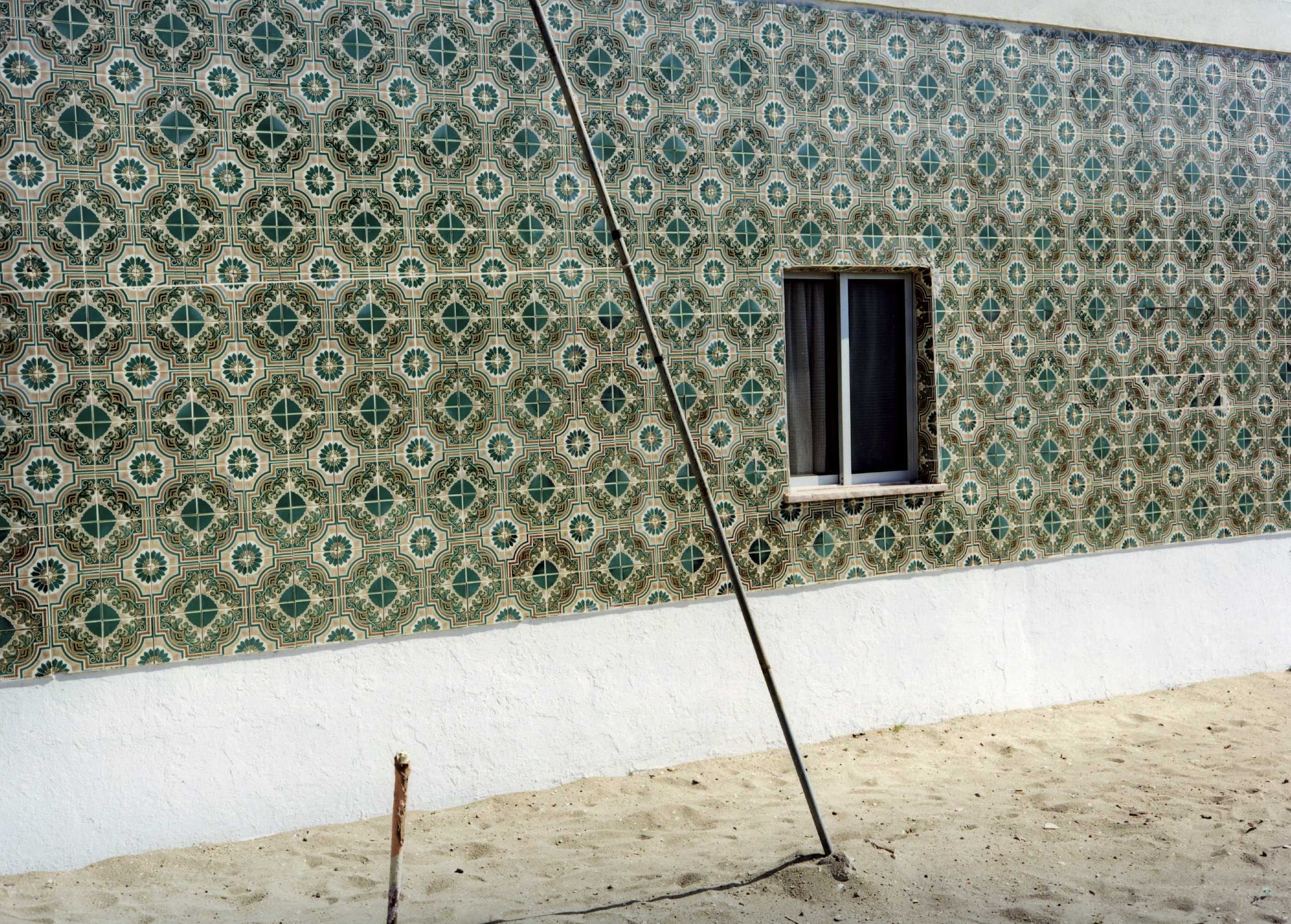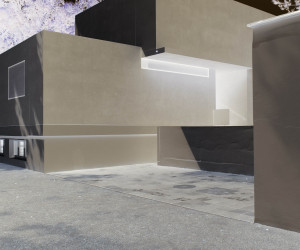JOACHIM BROHM
EXHIBITION Sep 10 — Dec 17, 2011













JOACHIM BROHM (*1955)
Fassade#1, aus der Serie 'Culatra' / Facade#1, from the series 'Culatra', 2008
c-print, printed 2009, mounted on Aludibond, framed
85 x 105 cm
© Joachim Brohm; VG Bild-Kunst Bonn 2018 / Courtesy Kicken Berlin

JOACHIM BROHM (*1955)
Hinterhof, aus der Serie 'Culatra' / Backyard, from the series 'Culatra', 2008
c-print, printed 2009, mounted on Aludibond, framed
85 x 105 cm
© Joachim Brohm; VG Bild-Kunst Bonn 2018 / Courtesy Kicken Berlin

JOACHIM BROHM (*1955)
Fassade#2, aus der Serie 'Culatra' / Facade#2, from the series 'Culatra', 2009
c-print, printed 2009, mounted on Aludibond, framed
84,2 x 104,2 cm
© Joachim Brohm; VG Bild-Kunst Bonn 2018 / Courtesy Kicken Berlin

JOACHIM BROHM (*1955)
Weg, aus der Serie 'Culatra' / Lane, from the series 'Culatra', 2009
c-print, printed 2009, mounted on Aludibond, framed
85 x 105 cm
© Joachim Brohm; VG Bild-Kunst Bonn 2018 / Courtesy Kicken Berlin

JOACHIM BROHM (*1955)
Boot#1, aus der Serie 'Culatra' / Boat#1, from the series 'Culatra', 2008
c-print, printed 2009, mounted on Aludibond, framed
85 x 105 cm
© Joachim Brohm; VG Bild-Kunst Bonn 2018 / Courtesy Kicken Berlin

JOACHIM BROHM (*1955)
Traktor#1, aus der Serie 'Culatra' / Tractor#1, from the series 'Culatra', 2008
c-print, printed 2009, mounted on Aludibond, framed
83,6 x 104,5 cm
© Joachim Brohm; VG Bild-Kunst Bonn 2018 / Courtesy Kicken Berlin

JOACHIM BROHM (*1955)
Portfolio 'Culatra', 2008-2010
24 c-prints, printed 2011
each ca. 48 x 59 cm
© Joachim Brohm; VG Bild-Kunst Bonn 2018 / Courtesy Kicken Berlin

HEINRICH RIEBESEHL (1938–2010)
Hanstedt I (Uelzen) April 1979, aus der Serie 'Agrarlandschaften', 1979
gelatin silver print, printed ca. 1979
30,3 x 40,5 cm
© VG Bild-Kunst, Bonn 2018 / Courtesy Kicken Berlin

HEINRICH RIEBESEHL (1938–2010)
Klein Waabs (Schleswig-Flensburg), Juli 1978, aus der Serie 'Agrarlandschaften', 1978
gelatin silver print, printed ca. 1978
30,4 x 40,5 cm
© VG Bild-Kunst, Bonn 2018 / Courtesy Kicken Berlin

HEINRICH RIEBESEHL (1938–2010)
Intschede (Verden), Juli 1978, aus der Serie 'Agrarlandschaften', 1978
gelatin silver print, printed ca. 1978
30,3 x 40,2 cm
© VG Bild-Kunst, Bonn 2018 / Courtesy Kicken Berlin

HEINRICH RIEBESEHL (1938–2010)
Heinum (Hildesheim), November 78, 1978
gelatin silver print, printed ca. 1978
30,5 x 40,5 cm
© VG Bild-Kunst, Bonn 2018 / Courtesy Kicken Berlin

WILHELM SCHÜRMANN (*1946)
Berlin, 1984
gelatin silver print, printed ca. 1984
ca. 45 x 59 cm
© Wilhelm Schürmann / Courtesy Kicken Berlin

WILHELM SCHÜRMANN (*1946)
Aachen, 1979
gelatin silver contact print, printed ca. 1979
24,9 x 19,9 cm
© Wilhelm Schürmann / Courtesy Kicken Berlin

WILHELM SCHÜRMANN (*1946)
Fachhochschule - Aachen - Schmiede, 1979
gelatin silver contact print, printed ca. 1979
25,2 x 20,2 cm
© Wilhelm Schürmann / Courtesy Kicken Berlin

WILHELM SCHÜRMANN (*1946)
Fachhochschule - Aachen, 1979
gelatin silver contact print, printed ca. 1979
25 x 19,9 cm
© Wilhelm Schürmann / Courtesy Kicken Berlin

WILHELM SCHÜRMANN (*1946)
Aachen, 1980
gelatin silver contact print, printed ca. 1980
25,2 x 20,1 cm
© Wilhelm Schürmann / Courtesy Kicken Berlin

ALBERT RENGER-PATZSCH (1897–1966)
Essen. Altstadt, Postallee. Alte Brennerei/ Old Distillery in Essen's Historic District (Postallee, 1928
gelatin silver print, printed ca. 1928
16,8 x 22,7 cm
© Albert Renger-Patzsch / Archiv Ann und Jürgen Wilde, Zülpich / VG Bild-Kunst, Bonn 2018 / Courtesy Kicken Berlin

BERND UND HILLA BECHER (1931–2007; 1934–2015)
Wasserturm, Kirkhamgate/ Leeds, GB & Wasserturm, bei Thionville/ Lothringen, Frankreich, 1967
2 gelatin silver prints, from the portfolio 'Industriebauten', printed 1975, published by Schirmer/ Mosel
each ca. 39,9 x 30,3 cm
© Estate Bernd & Hilla Becher / Courtesy Kicken Berlin
Exhibition Text
Joachim Brohm’s series Culatra, created in Portugal from 2008 to 2010, will be the focus of Kicken Berlin’s fall exhibition. This will be the first time the series has been shown in its entirety in Berlin. Kicken Berlin will also present the similarly named portfolio of 22 images as well as further pictures of Ilha da Culatra off the southern coast of the Algarve.
Brohm first explored Culatra at the encouragement of painter Heribert C. Ottersbach and visited repeatedly over a span of almost three years. The small, sparsely inhabited island manifested transitional spaces in which signs of modest use and infrastructure shape nature: sand pathways, makeshift buildings, vehicles, boats, and seemingly unusable discarded things. On these he affixes his inquisitive and astonished gaze.
Brohm approaches the cabins, rubbish heaps, pathways, facades, and the diverse vehicles on foot in order to portray the subjects from various perspectives: from his typical middle distance, from a wider diagonal angle, and in frontal close-ups. An extensive expanse alternates with detailed abundance in the peopleless images shot consistently around noontime. His usua restrained coloration, also a hallmark of Brohm’s work, radiates here under the southern sun with more contrast, lending the red, yellow, and blue tractors and boats a weighty sculptural presence. In this sense, Culatra opens a new chapter in Brohm’s work: colors and light cause the objects to glow, a celebration of the joy of making photographs.
Culatra clearly takes up the documentary language of a visual inventory. While Brohm’s earlier works drew on motifs he found in the immediate vicinity of his studies in Essen, Germany or Columbus Ohio – captured in the series Kray, Ruhr, and Ohio – his later projects concertedly sought out unspecific, transitory places where the urban meets the rural, such as a Munich industrial district portrayed in the series Areal.
Brohm was one of the first European photographers to combine the aesthetics of the 1970s New American Color and New Topographics movements into his own artistic vision. Forerunners such as Robert Adams, Allan Sekula, and Stephen Shore casually yet bluntly stated changes happening in the realm of the everyday and the environment. Brohm adapted this formal concept of subjective documentary and thus articulates “societal processes in metaphorical images” (Thomas Weski).


